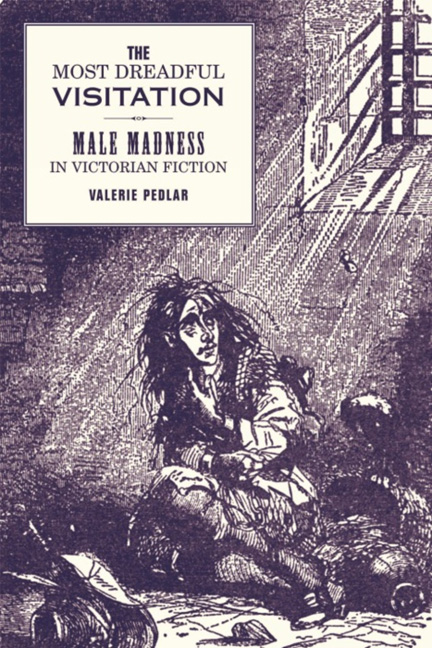Book contents
- Frontmatter
- Dedication
- Contents
- Acknowledgements
- Introduction
- 1 Insurrection and Imagination: Idiocy and Barnaby Rudge
- 2 Thwarted Lovers: Basil and Maud
- 3 Wrongful Confinement, Sensationalism and Hard Cash
- 4 Madness and Marriage
- 5 The Zoophagus Maniac: Madness and Degeneracy in Dracula
- Conclusion
- Bibliography
- Index
1 - Insurrection and Imagination: Idiocy and Barnaby Rudge
- Frontmatter
- Dedication
- Contents
- Acknowledgements
- Introduction
- 1 Insurrection and Imagination: Idiocy and Barnaby Rudge
- 2 Thwarted Lovers: Basil and Maud
- 3 Wrongful Confinement, Sensationalism and Hard Cash
- 4 Madness and Marriage
- 5 The Zoophagus Maniac: Madness and Degeneracy in Dracula
- Conclusion
- Bibliography
- Index
Summary
‘It is something to look upon enjoyment, so that it be free and wild and in the face of nature, though it is but the enjoyment of an idiot,’ says the narrator of Barnaby Rudge. ‘Who would not rather see a poor idiot happy in the sunlight, than a wise man pining in a darkened jail!’ Dickens's representations of idiocy and insanity are permeated by images of light and darkness, confinement and liberty. Although his fictional work makes little reference to the institutions of madness, a range of mad and eccentric men and women contribute their individuality to the panorama of human types rin the Dickens world. Some are confined, voluntarily or involuntarily – the madman in Pickwick Papers in a cell, Miss Flite in the debtors’ prison, Miss Havisham in Satis House – but they are not in madhouses. Others, such as Mr Dick in David Copperfield, roam freely. How far the gentleman next door to Mrs. Nickleby is constrained is not made clear. In many of these instances madness is not explicitly acknowledged and in some cases, for example Miss Havisham, it is arguable. Indeed, one of Dickens's contributions to the fictional exploration of human nature is precisely his recognition of the variety of quirks and eccentricities that blur the distinction between sanity and insanity. The novel, however, that does deal explicitly with madness is Barnaby Rudge, an early work, published in 1841, ten years before the first of the journalistic pieces on insanity published in Household Words. Here madness is not only explicit but a central theme.
Although its unusually long gestation took place during years when madness was a subject of popular and official interest, in which two of Dickens's friends, John Forster and John Conolly, were deeply involved, the novel is set at a time well before the main period of legislative interest in insanity, and one of the aims of this chapter will be to assess the ways in which the historical context allows Dickens to preserve a critical distance from the madness he depicts. Barnaby Rudge is remarkable for its foregrounding of madness, not only in the eponymous character of an idiot, but in the insistence on the madness of the mob in the riot scenes surrounding the historical figure of the ‘half-crazy’ Lord George Gordon.
- Type
- Chapter
- Information
- The Most Dreadful VisitationMale Madness in Victorian Fiction, pp. 27 - 52Publisher: Liverpool University PressPrint publication year: 2006



